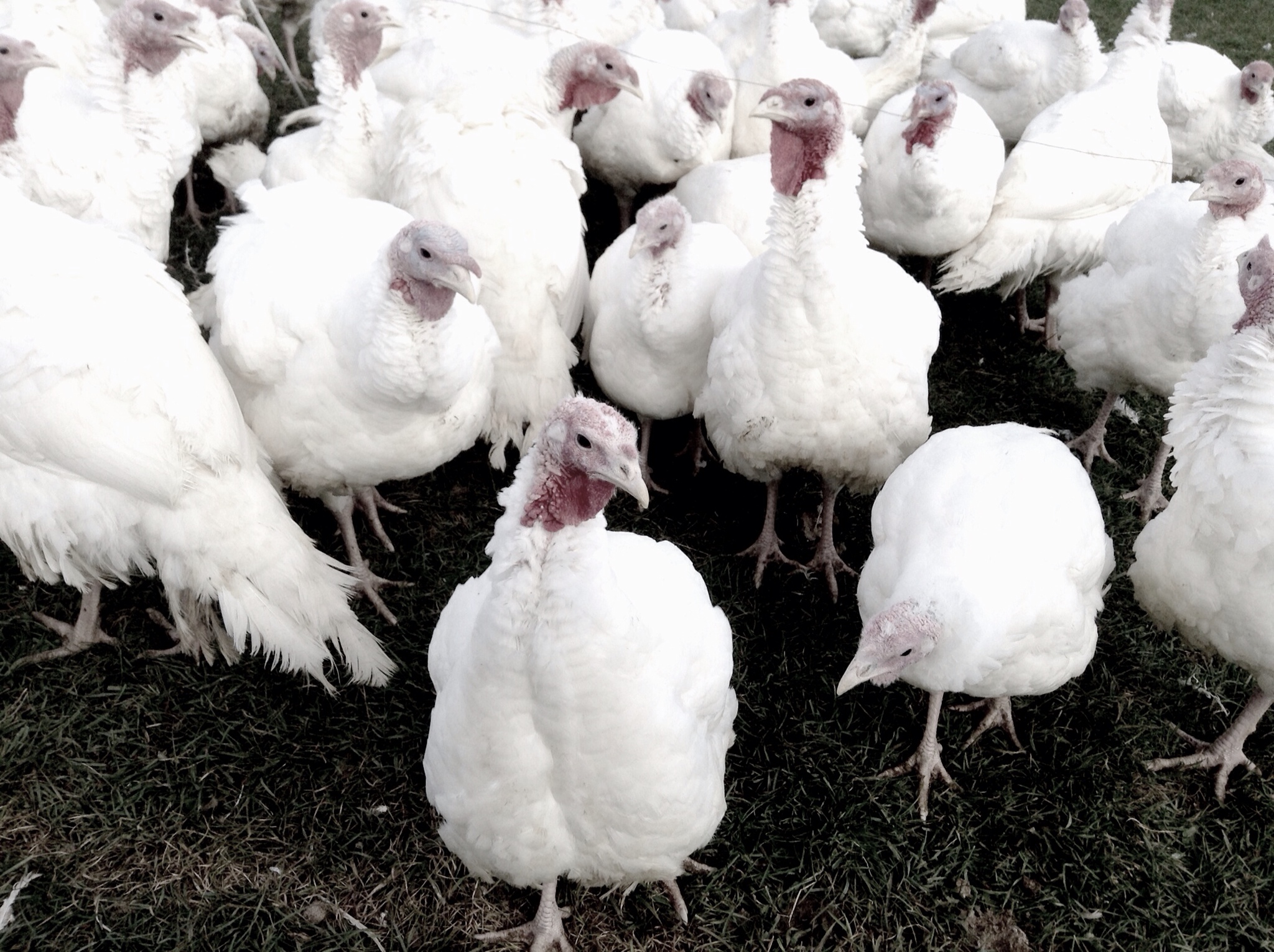
The moment is at hand…it is time to process the turkeys, which hails the official end of this year’s growing season. Our farm valley will finally fall silent over the next two weeks, and following our family Thanksgiving feast, we will rest.
For nearly twenty years now, our family has been raising turkeys out on pasture. We have gone from being a quirky local anomaly, to just one of thousands of independent, small, ecologically-focused farmers who are making turkeys available to their neighbors around the country.
Every year at this time I am reminded how this local food movement is really growing and taking hold of our culture, and I am filled with gratitude as more and more folks beat a path to a local farmer. And as more and more of you prepare to celebrate with a local pasture-raised turkey for the first time, this list of tips becomes increasingly in-demand.
So here it is, this year’s Pastured Turkey Cooking Tips, once more revised and updated based on the questions and dilemmas you wrote to me about last year. As I do every year, I will be sure to check your comments and emails to respond to any concerns you may have about preparing your holiday bird. Then, I will be sure to include that information in next years’ tips. Have a wonderful time preparing for your feast!
PASTURED TURKEY COOKING TIPS
Helpful hints for when you buy (and roast) your first pasture-raised Thanksgiving turkey
Please note that my new cookbook, Long Way on a Little, contains my easiest, most delicious turkey recipe ever, along with the latest rendition of all these turkey tips….plus scads of recipes for using the leftovers!
1.Please be flexible. If you are buying your pasture-raised turkey from a small, local, sustainable farmer, thank you VERY much for supporting us. That said, please remember that pasture-raised turkeys are not like factory-farmed birds. Outside of conscientious animal husbandry, we are unable to control the size of our Thanksgiving turkeys. Please be forgiving if the bird we have for you is a little larger or a little smaller than you anticipated. Cook a sizeable quantity of sausage stuffing if it is too small (a recipe appears below), or enjoy the leftovers if it is too large. If the bird is so large that it cannot fit in your oven, simply remove the legs before roasting it.
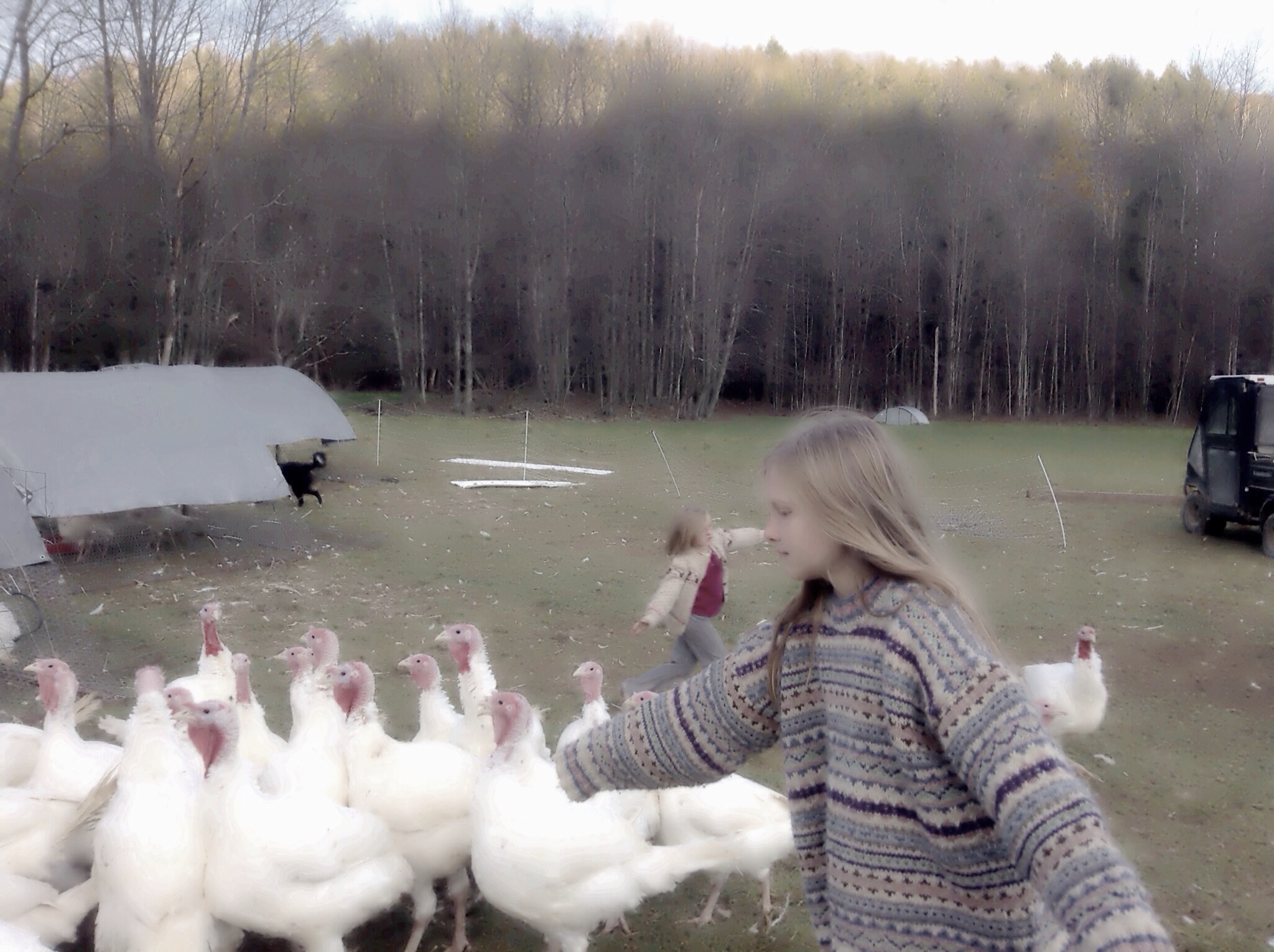
2. Balk about the price in private. Look, I’m not going to lie. If you are used to picking up a free turkey from the grocery store, then the $5-$7 per pound ticket on a pastured turkey seems expensive. If you’ll notice, however, the farmer selling it isn’t exactly getting rich off you. He or she is selling it based on the farm’s expenses. (and grain is VERY expensive these days!) Factory birds from the grocery store are not cheap, either. The price is a rouse. You pay for industrialized food ahead of time through your taxes. I guarantee that, once you get home, experience the amazing flavor, the ease of cooking it and the fact that you don’t suffer gastrointestinal illness after (as so many folks do with factory farmed birds), you will agree the price was worth it.
3.Know what you are buying. If you don’t personally know the farmer who is growing your turkey, take the time to know what you are buying! “Pastured” is not necessarily the same as “free-range.” Some grass-based farmers use the word “free-range” to describe their pasture-raised birds, but any conventional factory farm can also label their birds “free-range” if they are not in individual cages, and if they have “access” to the outdoors – even if the “outdoors” happens to be feces-laden penned-in concrete pads outside the barn door, with no access to grass. “Pastured” implies that the bird was out on grass for most of its life, where it ate grass and foraged for bugs, in addition to receiving some grain.
4.Brining and Basting optional. If tradition dictates that you season your meat by brining your bird and baste it as it roasts, by all means, do so. However, many people brine and baste in order to keep the bird from drying out. This is not necessary, and basting only wastes energy as you continually open the oven door. Pastured birds are significantly juicier and more flavorful than factory farmed birds. You can spare yourself this extra step as a reward for making the sustainable holiday choice! (By the way, those turkey roasting bags are not necessary, either.)
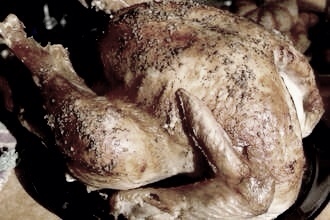
5.Monitor the internal temperature. Somewhere along the line, a lot of folks came to believe that turkeys needed to be roasted until they had an internal temperature of 180 degrees Fahrenheit. Yuck. You don’t need to do that. Your turkey need only be cooked to 165 degrees. If the breast is done and the thighs are not, take the bird out of the oven, carve off the legs and thighs, and put them back in to cook while you carve the breast and make your gravy. That entire holiday myth about coming to the table with a perfect whole bird and then engaging in exposition carving is about as realistic as expecting our daughters will grow up to look like Barbie (and who’d want that, anyhow?). Just have fun and enjoy the good food.
6.Cook the stuffing separately. I know a lot of folks like to put the stuffing inside their holiday birds, and if Thanksgiving will be positively ruined if you break tradition, then stuff away. However, for a couple reasons, I recommend cooking your stuffing separately. First, everyone’s stuffing recipe is different. Therefore, the density will not be consistent, which means that cooking times will vary dramatically. If you must stuff your bird, allow for about 12-15 minutes per pound cooking time, but be assiduous about monitoring the internal temperature of the meat and the stuffing. Due to food safety concerns, I happen to think it is safer to cook the stuffing outside the bird. Plus, it is much easier to lift and move both the bird and the stuffing when prepared separately, and to monitor the doneness of each. Rather than putting stuffing in my bird’s cavity, I put in aromatics, like an onion, carrot, garlic and some fresh herbs. When the bird is cooked, I add these aromatics to my stock pot. The aromatics perfume the meat beautifully, and the only seasoning I wind up using on the surface is butter, salt and pepper.
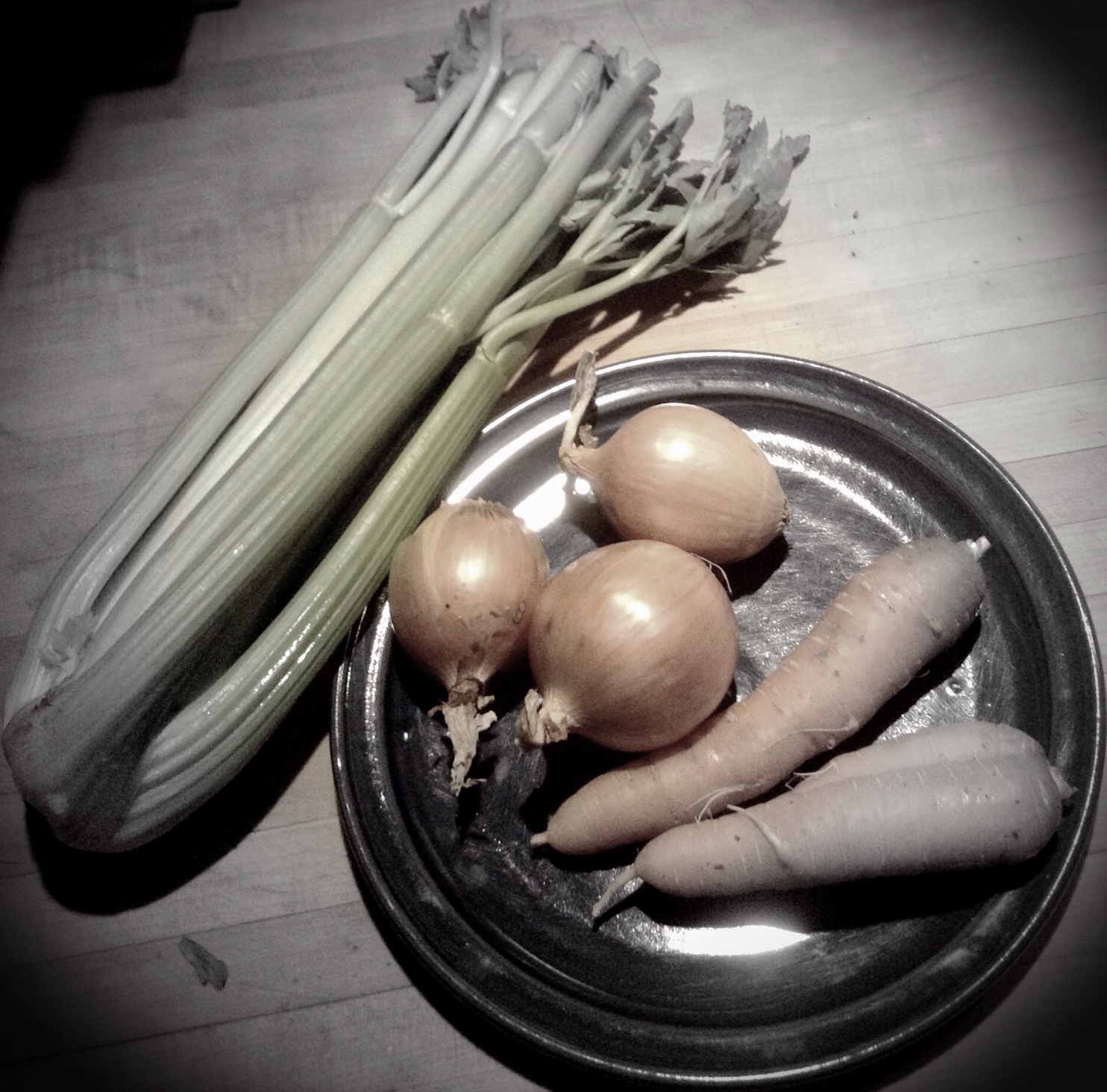
7.Do not cover your bird! Covering it will only make the skin rubbery and soggy. Do not put tin foil over the breast. It is an unnecessary waste of aluminum.
8.No need to flip. I used to ascribe to that crazy method of first roasting the bird upside down, then flipping it over to brown the breast. The idea was that the bird would cook more evenly, and the breast wouldn’t dry out. When I did this, the turkey came out fine. But I suffered 2nd degree burns, threw out my back, ruined two sets of potholders and nearly dropped the thing on the floor. Pasture-raised turkeys are naturally juicy. Don’t make yourself crazy with this stunt. Just put it in the oven breast-side up like you would a whole chicken, don’t cover it and don’t over-cook it. Take it out when the breast is 165 degrees (see above). If, despite the disparaging comments above, you still want to show off the whole bird, then bring it into the dining room, allow everyone to ooh and aah, then scuttle back to the kitchen, and proceed as explained above.
9.Be ready for faster cook times. Pasture-raised turkeys will cook faster than factory-farmed birds. Set the oven temp for 325 degrees and figure on 8-10 minutes per pound for an un-stuffed bird, 12-15 minutes per pound if stuffed. Don’t worry — It WILL brown! But remember: oven temperatures and individual birds will always vary. Use an internal meat thermometer to know for sure when the bird is cooked. For more help with cooking your turkey, don’t forget to refer to Long Way on a Little or The Grassfed Gourmet by Shannon Hayes. What?!? You don’t own a copy yet? Click here immediately! (Yes. Shameless promotion is an essential part of this post, and an annual holiday tradition.)
10.Use a good-quality roasting pan. If this is your first Thanksgiving and you do not already own a turkey roasting pan and cannot find one to borrow, treat yourself to a really top-quality roaster, especially if you have a sizeable bird. Cheap aluminum pans from the grocery store can easily buckle when you remove the bird from the oven, potentially causing the cook serious burns or myriad other injuries in efforts to catch the falling fowl. Plus, they often end up in the recycling bin, or worse, landfills. If you buy a good quality large roasting pan, and you happen to have a copy of Long Way on a Little and/or The Grassfed Gourmet Cookbook (another shameless hint), I guarantee you will have multiple uses for the pan!
11.Pick the meat off the bird before making stock. If you plan to make soup from your turkey leftovers, be sure to remove all the meat from the bones before you boil the carcass for stock. Add the chunks of turkey back to the broth just before serving the soup. This prevents the meat from getting rubbery and stringy. For an extra-nutritious stock, follow the advice offered in Long Way on a Little.
12.Help is available. In recent years, our home seems to have become the unofficial Pasture-Raised Thanksgiving Hotline. Please do not hesitate to write to me with your questions at sapbushshannon@gmail.com. Better still, so that everyone else can benefit, go ahead and post in the comments section below. I make a point of checking and email and blog comments three times a day right up through Thanksgiving Day (I stop around noon), so that I can promptly respond to your questions or concerns. Please make sure you write “turkey question” in your subject heading so that I spot it quickly. Enjoy your holiday!
And finally, here’s my favorite recipe for walnut sausage stuffing. If you cannot eat grains in your family, simply double up on the sausage and the walnuts and leave out the bread:
Walnut Sausage Stuffing
(serves eight)
Taken from Long Way on a Little: An Earth Lover’s Companion for Enjoying Meat, Pinching Pennies and Living Deliciously.
■1 whole baguette, chopped into ½ inch cubes and allowed to sit out overnight
■2 Tablespoons fennel seeds
■1 cup walnuts, mildly crushed
■2 Tablespoons olive oil
■1# Sweet Italian, Hot Italian, or Breakfast sausage
■4 Tablespoons butter
■4 onions, chopped
■2 carrots, peeled and diced
■1/2 cup dried cranberries (or use one cup fresh)
■½ cup raisins
■2 T rubbed sage
■3 cloves garlic, minced
■2 tablespoons brandy
■6 eggs
■3 cups chicken broth
■1 teaspoons salt
■1 teaspoon black pepper
Preheat the oven to 350 degrees.
Bring a mid-sized skillet up to a medium-hot temperature.
Add the fennel seeds and allow them to toast until fragrant.
Remove the seeds to a small dish, then add the walnuts to the same hot, dry skillet and allow them to toast 3-5 minutes, taking care to stir them constantly to prevent burning.
Pour the walnuts off into a large bowl.
Add olive oil to the same skillet, then fry the sausage until it is cooked through (about 8-10 minutes).
Remove the sausage to the same large bowl containing the walnuts.
Add the butter to the skillet, allowing it to melt and blend with the sausage drippings.
Add the onions and carrots, sauté 2 minutes, then add the cranberries and raisins and sauté two minutes longer.
Sprinkle the sage over the vegetables, sauté 1 minute, then add the garlic and toasted fennel seeds.
Sauté two minutes longer, then add the entire mixture into the large bowl with the walnuts and sausage.
To the same big bowl, add the bread, chicken broth, eggs, salt, pepper and brandy, and prepare to get messy.
Using your hands (or salad servers), thoroughly mix all the ingredients.
Butter a 13 x 9 inch baking pan, add the stuffing, then cover tightly with a piece of buttered aluminum foil.
Allow the stuffing to cook 35 minutes, then remove the foil and allow it to bake 30 minutes longer, until the top is nicely crisped and lightly browned.
This essay was written by Shannon Hayes, whose blog, GrasssfedCooking.com and RadicalHomemakers.com, is supported by the sale of her books, farm products and handcrafts. If you like the writing and want to support this type of creative work, please consider visiting the blog’s farm and book store.
To view Ula’s Greeting Cards and support Saoirse and Ula’s (Shannon and Bob’s kids) entrepreneurial ventures, click here.
Feel free to click on any of the links below to learn about Shannon’s other book titles:


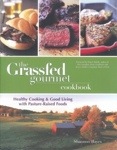
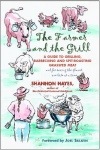
Back in 1997, I was blown away when I ate my first pasture-raised turkey after I was lucky enough to score an invite to celebrate Thanksgiving at Sap Bush Hollow. That changed the way I ate. A happy bird, roasted simply with salt and pepper was better than I could imagine. I have only eaten pasture-raised birds since, some of which I raised myself, none of which will ever taste as good as that memory. Thank you.
Best wishes for a healthy happy harvest from central Pennsylvania.
Home of my favorite: white frost farms! Thank you Kathy and kit Kelly for a summer full of organic goodness
Our family is super psyched to experience our first pasture-raised turkey this year – thanks to Cathy and Kit Kelley at White Frost Farm in Washingtonville, PA, who we are fortunate to live right down the road from. I’ll be hosting Thanksgiving for our family this year and this pastured turkey will be my “secret weapon” for a (hopefully!) unforgettable meal. Thanks for all the advice Shannon!
Thank you Shannon!
Followed the above stuffing recipe, Shannon. It was absolutely wonderful. Used a gluten-free bread made by Rudi’s instead of baguette, but no other changes. Its the new standard to beat! Thanks for sharing it!
And, following your incredibly simple method for roasting the bird yielded the most moist and tender breast meat ever! Of course it was a pastured bird from a local farm, but still, best ever.